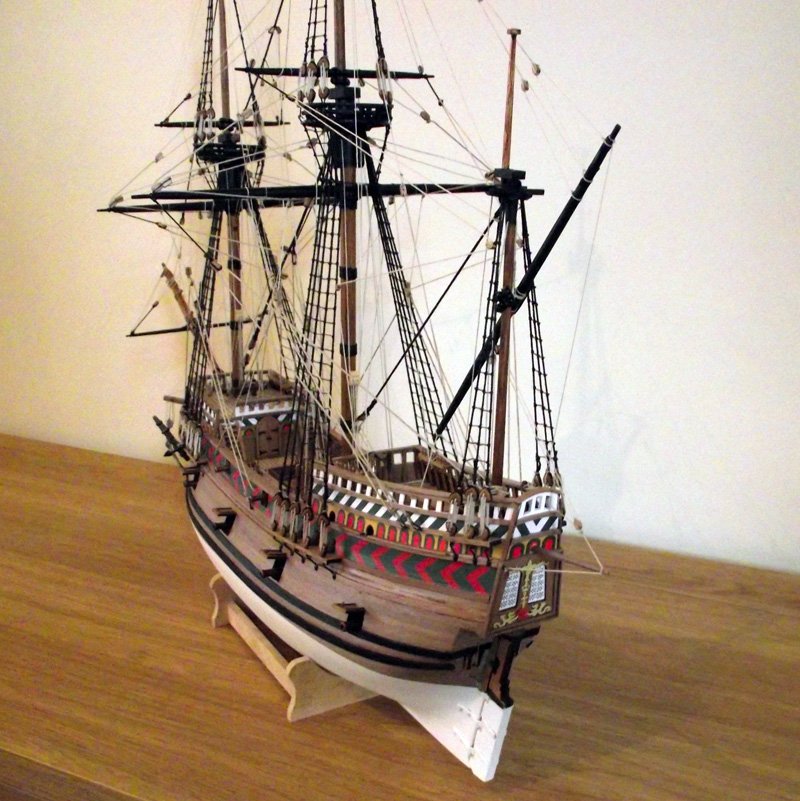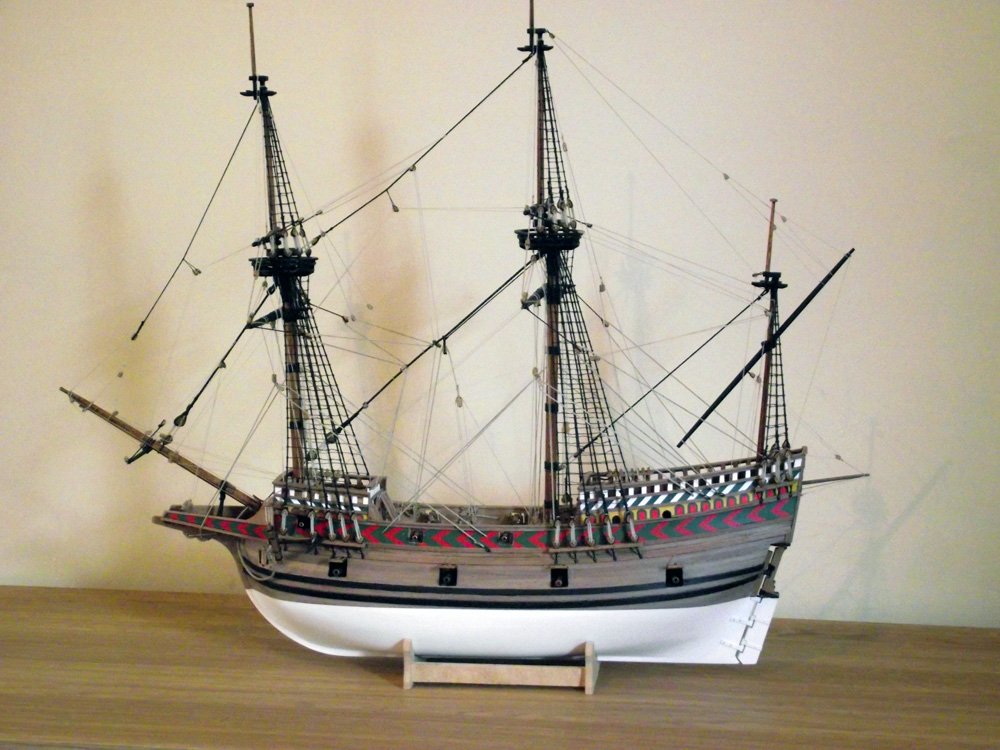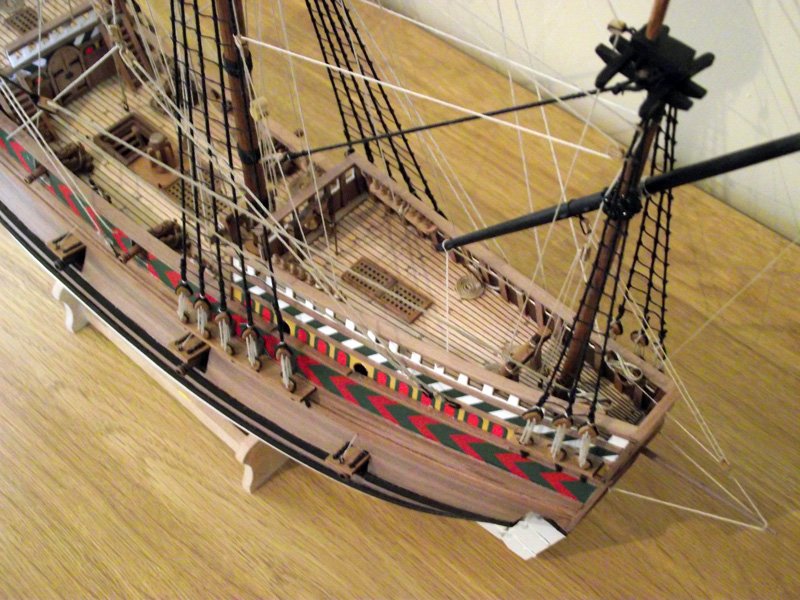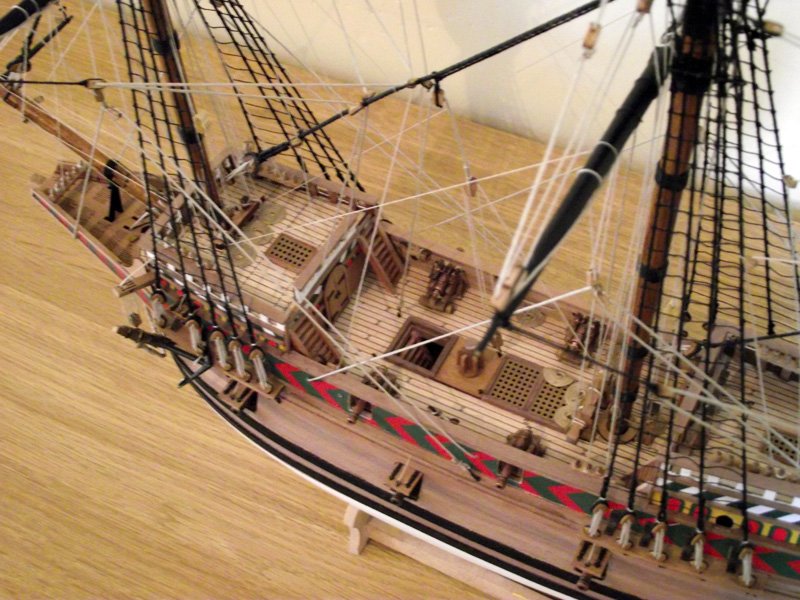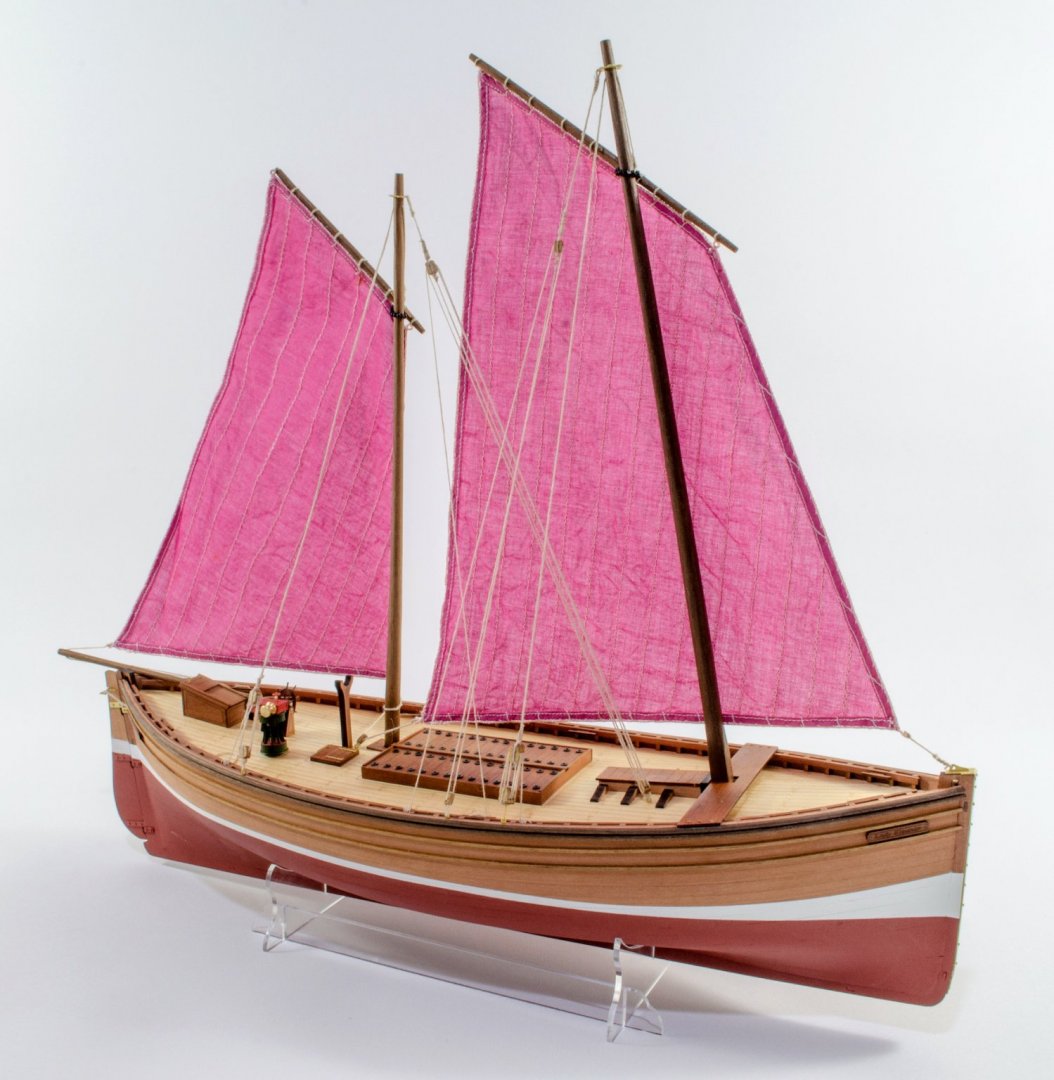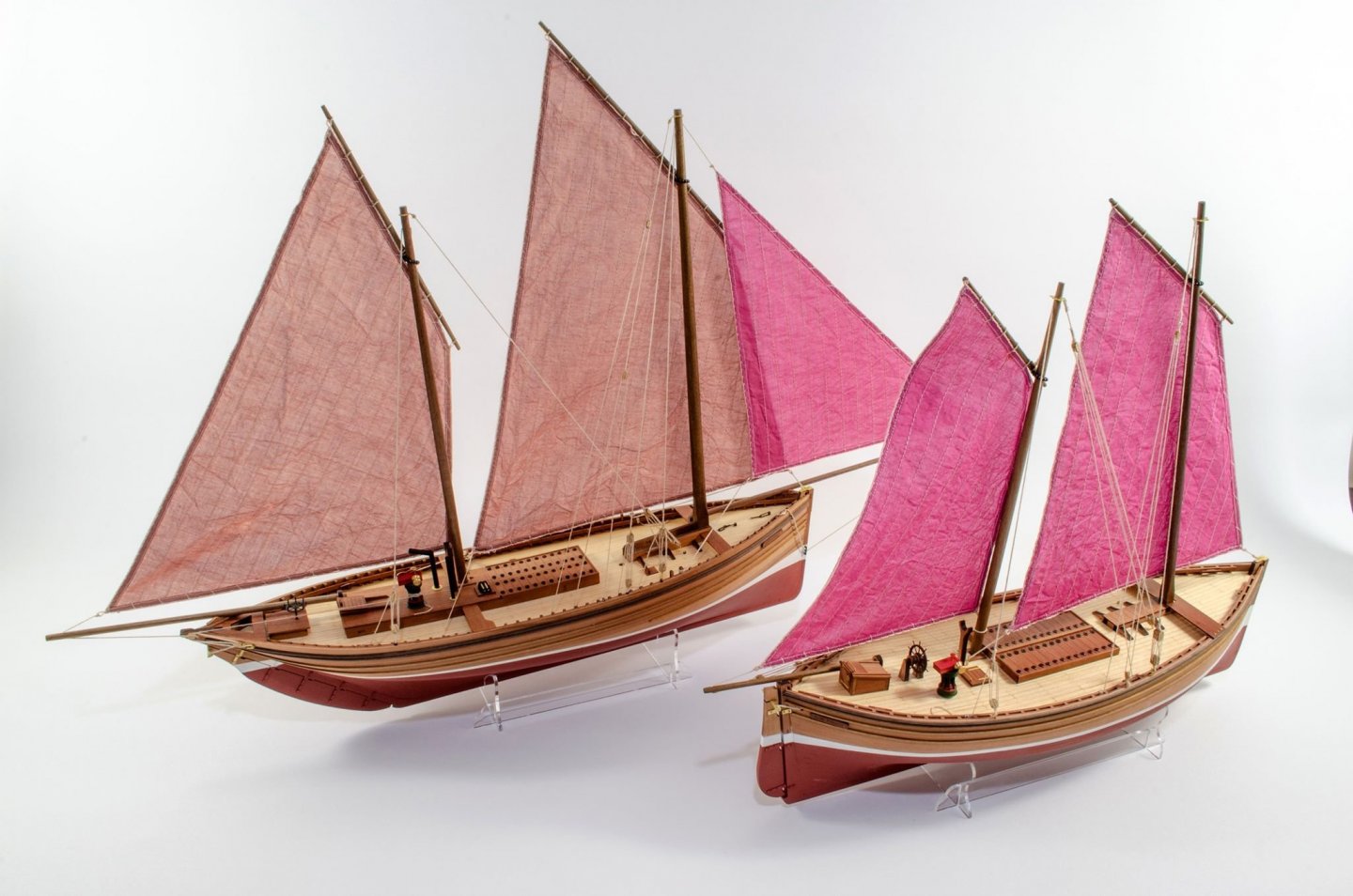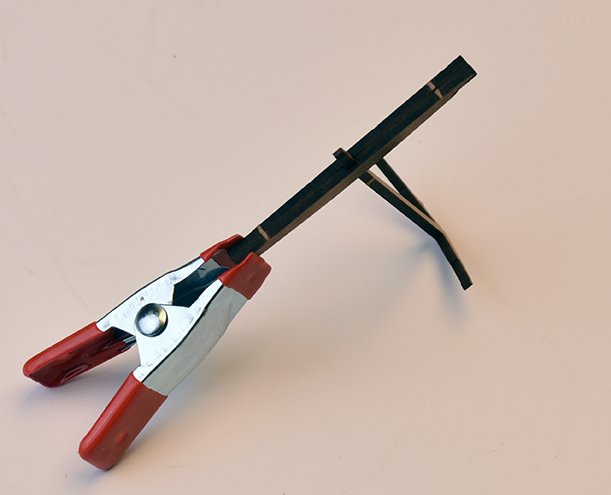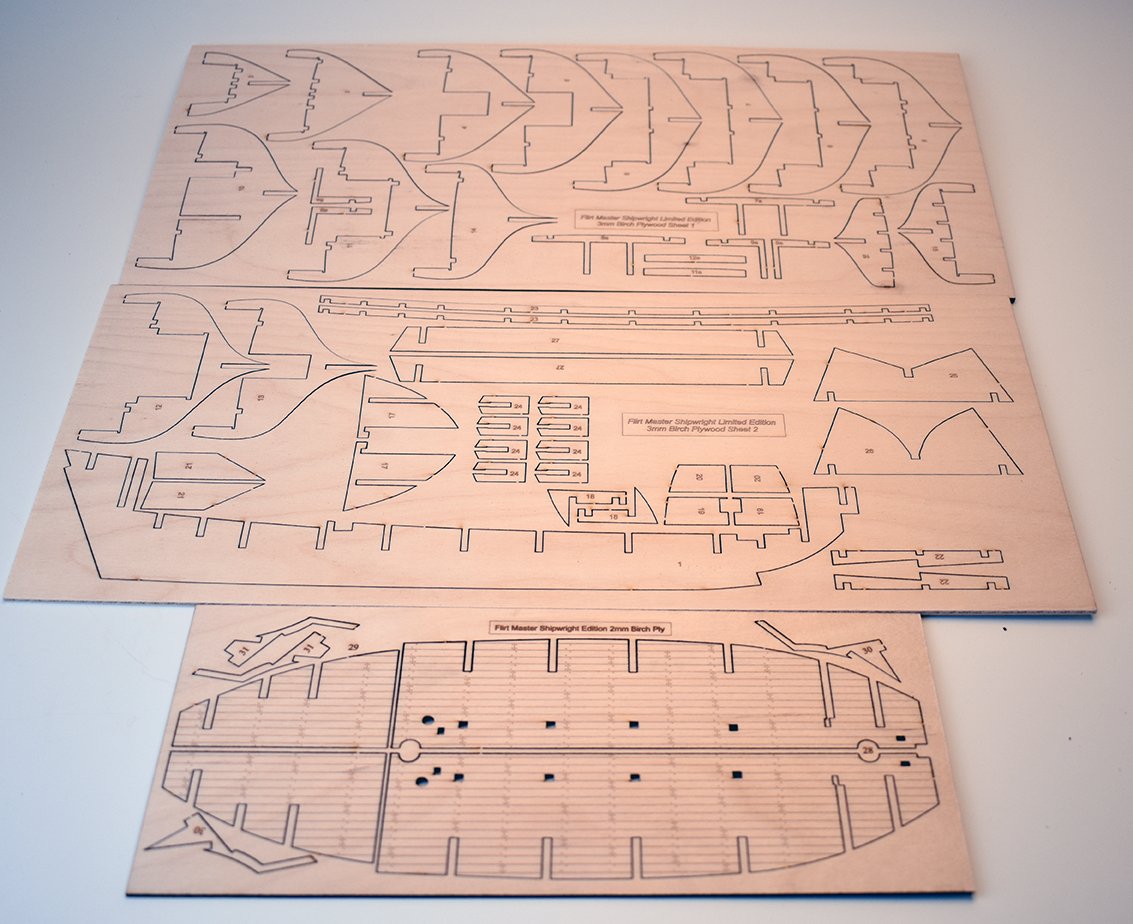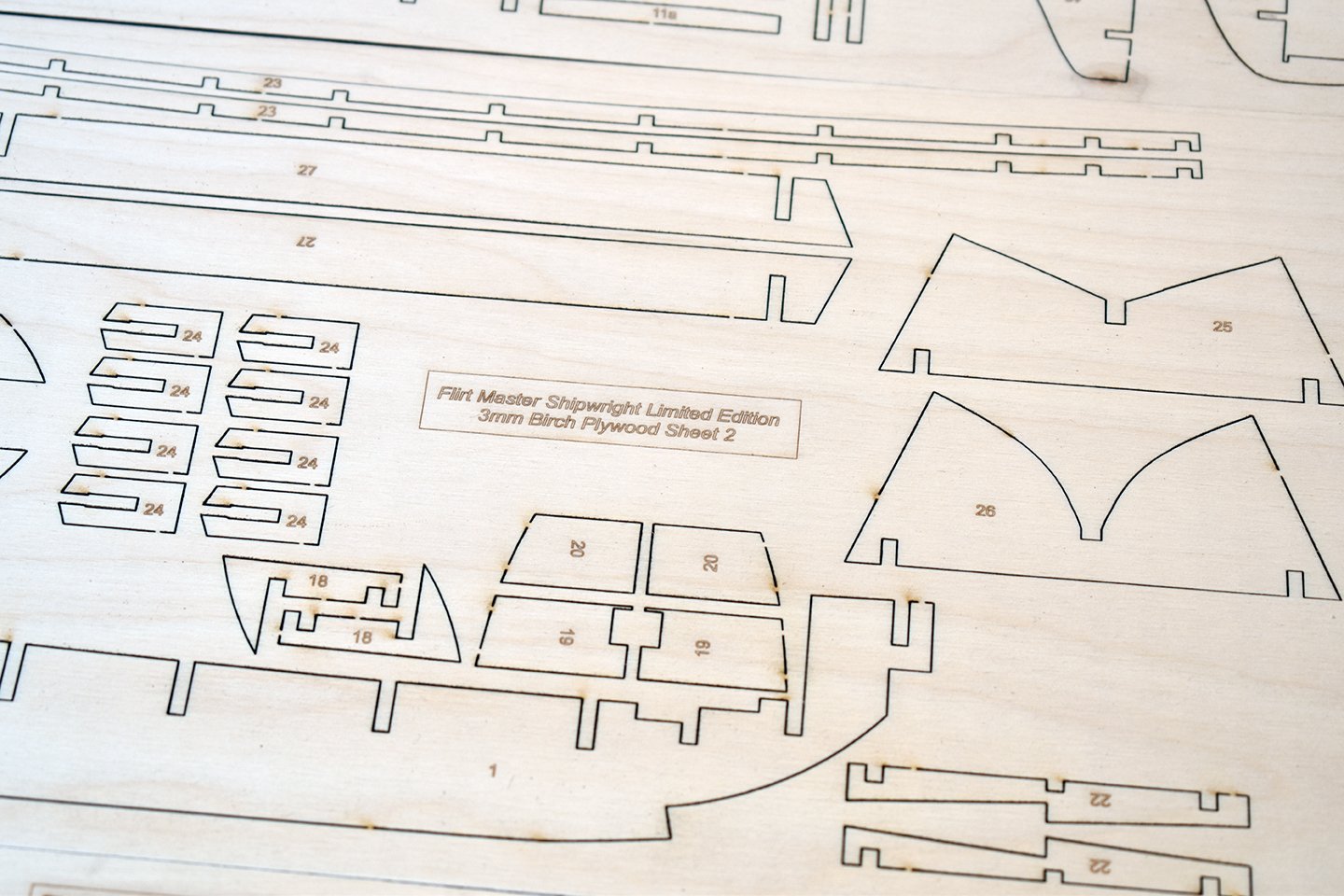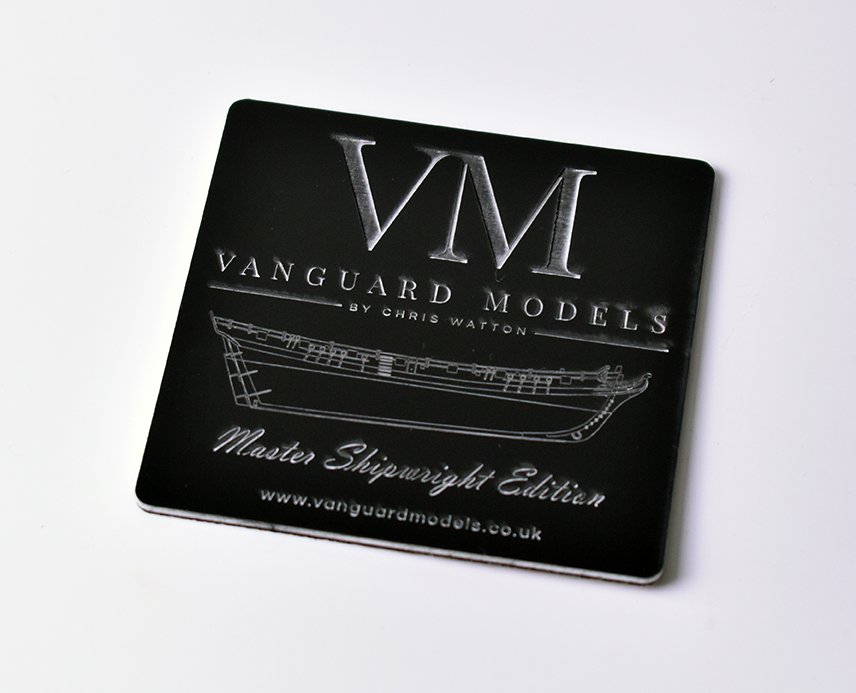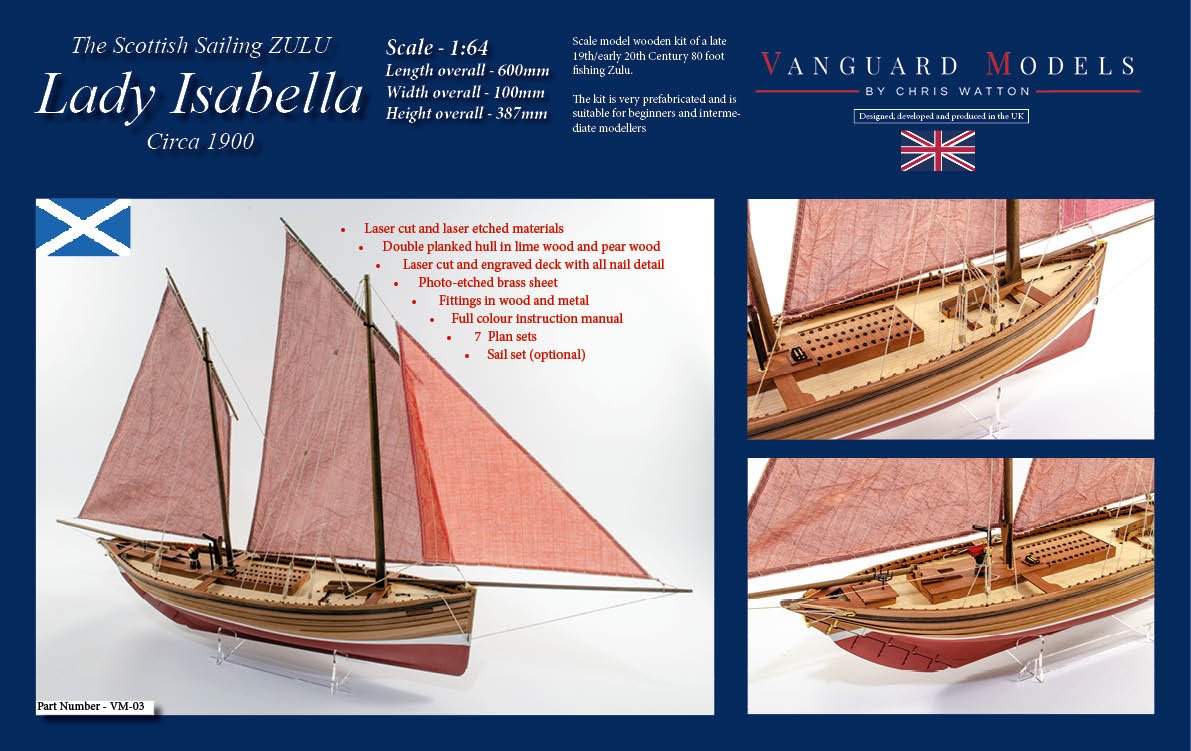-
Posts
2,286 -
Joined
-
Last visited
Content Type
Profiles
Forums
Gallery
Events
Everything posted by chris watton
-
Hi Ron, The actual laser machine is remarkably quiet (unlike CNC routing machines). I bought a low noise air compressor with the machine, which blows a jet of air over the laser cut parts to minimise burning. The machine that makes the most noise is actually the fume extractor, but when running normally, even that isn't too bad, and can hear the radio just fine in the laser room. If the door is closed in the room, you wouldn't even know it was running. I will have a smell of the boxwood laser cut parts, and report back....
-
Here are some pics of the Flirt Master Shipwright boxwood 1 and 1.5mm being laser cut. For the 100x500mm sheets, I usually laser cut four at a time, but boxwood is much more expensive, so am doing one at a time to ensure they are set up correctly for each sheet. A lot more time consuming, but I know the sheets will be good.
-

Airfix Revenge & Revell Golden Hind Accuracy
chris watton replied to Robert Taylor's topic in Nautical/Naval History
I did some designs for a 64th scale Golden Hind back in 2009, and liaised with an expert on this period throughout, who had studied and researched this period all his life. The pictures attached was the result from all available evidence and 'expert conjecture'. It looks a lot different to what we are all used to seeing. This ship really was tiny, too small for stacked multiple rear deck levels, and possibly too small for the often shown stern walkway. -
Jim Hatch has finished the prototype model for the Zulu's stable mate, the Fifie Lady Eleanor. The foremast for both Zulu and Fifie is actually comes in 8x8 and 6x6 square walnut respectively, as the bases of the masts are square. Am hoping Zulu will be ready for release at the end of next week, and Fifie the week after, depending on how quick I can put the manual together and how quick the printers can get the plans, manual and box label done.. Oh, I had my boxwood sheet arrive yesterday. Started to laser cut the 1mm, and it cuts (and etches) well - although I did have to scrap a couple of sheets due to my own stupidity...
-
I have tried to find out if I can get pearwood dowel, but never get an answer. I think a light dowel would suit a boxwood model, and limewood isn't too bad for this, and much easier to work with when tapering. I know that the equivalent boxwood sheet is almost four times the cost of pear, which is also expensive when compared to the basswood sheet. I don't care as long as people do not paying a little more the material, at least I know the parts are not going to split by just looking at them...
-
I wanted to see what I could transfer over from PE to laser cut and engraving, today was dedicated to this (and to see how much I could fit on the sheets). Also moving all yard/mast/bowsprit cleats for Flirt from PE to laser cut wood, and round centre holes for carriage wheels - but if you moan about having to file the axles, don't have a pop at me, a few of you asked for it! lol. Also continuing to reduce retention tab count for each part, as pear is a lot more robust (dense) than basswood (Speedy was originally designed with basswood in mind, seems a lifetime ago now..), and where possible, moving remaining retention tabs where they will be hidden when fitted, so you don't have to file an exposed part to get rid of the tab, as once you file one edge, you have to do the rest. I know most file the edges anyway, but still better without tab stubs to contend with, too. But I ramble, am tired...
-

kit review 1:32 Fifie – The Scottish Motor Fishing Vessel by Amati
chris watton replied to James H's topic in REVIEWS: Model kits
Sorry, I no longer have the plans, this was designed over 12 years ago when I worked for Amati in Italy. -
Those little 4-pounder carriages are tiny, aren't they!
- 725 replies
-
- vanguard models
- speedy
-
(and 1 more)
Tagged with:
-
OK, today I have been laser cutting sheet samples, to how the quality for the underside has changed, and these are the results Pictured is 1mm and 2mm sample sheet, showing upper side and lower side. I am quite happy with this. The sheets are not production sheets, but just test beds for a few changes to some stuff, to see how they look and to decide whether to keep in production files.
-
Thank you Sceatha, much appreciated. The era a couple of thousand years before 1177bc and a thousand years after this fascinate me. I do have the book Egypt, Greece and Rome: Civilizations of the Ancient Mediterranean by Charles Freeman, and have read it many times. I have always been fascinated with trying to understand how first civilizations came to be, and start working together, and then fighting..
- 81 replies
-
- egyptian
- byblos ship
-
(and 1 more)
Tagged with:
-
Thank you Sceatha, I have just ordered the book from Amazon, being sent via California!
- 81 replies
-
- egyptian
- byblos ship
-
(and 1 more)
Tagged with:
-
Loving this build. I would love to do one of these vessels one day. Are there any books with decent line drawings (I know most would be speculative)?
- 81 replies
-
- egyptian
- byblos ship
-
(and 1 more)
Tagged with:
-
Hi Bob, Regarding the differences between the original Alert and second edition, the changes are in the laser cut parts. All laser cut parts for version one were cut in Italy, and all wooden sheets are basswood, including the main sub deck. Version 2 has all wooden laser cut parts in pearwood, and tighter tolerances for slots in the MDF laser cut keel and bulkheads, and the main sub deck is 0.8mm birch plywood. Version 1 had white metal cast cannon and version 2 has black resin cast 6 pounder and half pounder barrels. Wood strip is the same, but you can specify if you want the laser etched deck to replace the deck planking strips, and photo etched sheets are the same for both versions No photo's of Flirt yet, as the prototype model is about to be started, but it will look a lot like Speedy without the copper plates and no flying jibboom, and missing the four timberheads located on the fore gunwale of Speedy. Lady Isabella will be available as soon as I receive the printed material (manual, plans and box label), the file of which we sent to the printers yesterday. The Fifie, Lady Eleanor will be release almost at the same time.
-

kit preview 1:64 Zulu fishing Boat - Vanguard Models
chris watton replied to James H's topic in REVIEWS: Model kits
Cheers, but I have already designed a similar vessel for Amati with the powered version of a Fifie, I am concentrating on 64th scale subjects only for the foreseeable future. Just waiting for the plans, box label and colour instruction manual to be printed now! -
That is Flirt's lower deck shown (Master Shipwright version). I will probably do Alert's sister, Rattlesnake at some point, but completely new designs, but no plans for any 48th scale stuff, I want to stick with 64th. The next 6 kits are all planned out and are all 64th. My wife is now packing the Zulu laser cut and PE parts in the boxes, all I am waiting for is the plans, instruction manual and box label..
-
Hi Vane, The first batches of laser cut for Speedy (including all Master Shipwright kits) were sub contracted to another UK company, who did an OK job, but quite expensive. I didn't get my laser machine until late December, and it took a while to get to grips with it, so I sub contracted another 20 Speedy kits to be laser cut, lest I mess them up. A lot has changed since then, and I would not consider sub contacting laser work out, not now that I know what my machine is capable of. I have never noticed the lines on the edges of that 2mm MDF, I do not think they are there on later kits. I had already made 2 models, one complete and one complete hull using the same laser cut files, and didn't notice those lines along the edges, I just knew the parts fitted together very well and I was happy with all of the fit. At the time, I used the best people I knew, who replaced the Italian sub contractors, as the latter samples were way too sloppy a fit. Regarding where I am now, I have attached some recent laser cut samples I have done myself, for the future Flirt 2mm wood anchor stocks, and also the main anchor body in 2mm MDF. There are no wavy lines on these along the cutting edges. I have also attached a few pics of current state of laser cutting, these are the Flirt MS 2 and 3mm laser cut parts. For the 2mm, I have shown sides of the sheets - I have spent a lot of time to eliminate laser blowback (as evidenced in my previous post), to make the laser sheets as presentable as I can, whilst also fine tuning both laser cutting and engraving, which the special edition Flirt parts should show. ASAT - Regarding Bristol, this was meant to be my second kit. However, because my business plan has changed, and want to produce higher quality kits with higher quality materials, the costs involved for larger kits is much, much more. Initially, Bristol was going have lave laser cut basswood parts and Tanganyika planking. It still may come with Tanganyika (as the stock I have is very good and the colour is perfect), but it will have many sheets of pear or similar, which costs a hell of a lot more than cheap basswood. With this in mind, I need to work up to the larger kits a little slower than originally planned, due to the (much) higher investment costs of even the smallest kits. But what I hope and am aiming for is that all kits will be of similar high quality. Bristol is not scrubbed, as I have already invested a few thousand pounds into the development, it is just delayed, and that delay will ensure Bristol and others that follow will be as perfect as I can make them.
-
Just a quick update. The Zulu is complete, and just waiting for the printers now. I have attached a pic of the box label, which I finished yesterday. Fifie will not be too far behind, thanks to Jim Hatch, and also thanks to Jim for helping with the Flirt development, which I anticipate will be ready July/August, with a very, very special Master Shipwright limited edition. And while Jim works on Flirt, I can work on another development. I had my new 'pin bed' arrive this morning from the US. The pins are magnetic and they raise the material from the bed to reduce/stop blowback on the underside of the material. Looking forward to trying it out.. Hope you're all keeping safe! Cheers, Chris ETA - I put in a large order for Master-Korabel stuff this week, but was told Russia is in complete lockdown for the next few weeks, so I cannot get any new stock until the world opens for business again...
-
No problems at all, it at the very least gives me a chance to explain certain aspects of design/material choices. ETA - I did the top of the ship's pumps for the same reason. I designed them initially in 3-D CAD, but the people who do the casting for me told me the parts were too fine to be cast correctly, they would need 'beefing up'. I preferred to keep the scale appearance, so opted for PE parts instead, as they look better, more 'delicate' when in place and painted. Again, commercial choices were out of the question.
-
I know that for the Amati 64th scale Victory, I had to choose the smallest belaying pins Amati did. Up until then, they were hardly ever used, as most 'chubby' wooden ones went into the kits or shiny turned brass pins. What I used for Victory I just about got away with, scale wise, as the model is so large anyway. I just about managed to add every belaying pin that the full size ship had. If you look at most commercial models, there are a lot less pins than the real thing, this is because what is used in the kits are comically over size.
About us
Modelshipworld - Advancing Ship Modeling through Research
SSL Secured
Your security is important for us so this Website is SSL-Secured
NRG Mailing Address
Nautical Research Guild
237 South Lincoln Street
Westmont IL, 60559-1917
Model Ship World ® and the MSW logo are Registered Trademarks, and belong to the Nautical Research Guild (United States Patent and Trademark Office: No. 6,929,264 & No. 6,929,274, registered Dec. 20, 2022)
Helpful Links
About the NRG
If you enjoy building ship models that are historically accurate as well as beautiful, then The Nautical Research Guild (NRG) is just right for you.
The Guild is a non-profit educational organization whose mission is to “Advance Ship Modeling Through Research”. We provide support to our members in their efforts to raise the quality of their model ships.
The Nautical Research Guild has published our world-renowned quarterly magazine, The Nautical Research Journal, since 1955. The pages of the Journal are full of articles by accomplished ship modelers who show you how they create those exquisite details on their models, and by maritime historians who show you the correct details to build. The Journal is available in both print and digital editions. Go to the NRG web site (www.thenrg.org) to download a complimentary digital copy of the Journal. The NRG also publishes plan sets, books and compilations of back issues of the Journal and the former Ships in Scale and Model Ship Builder magazines.




